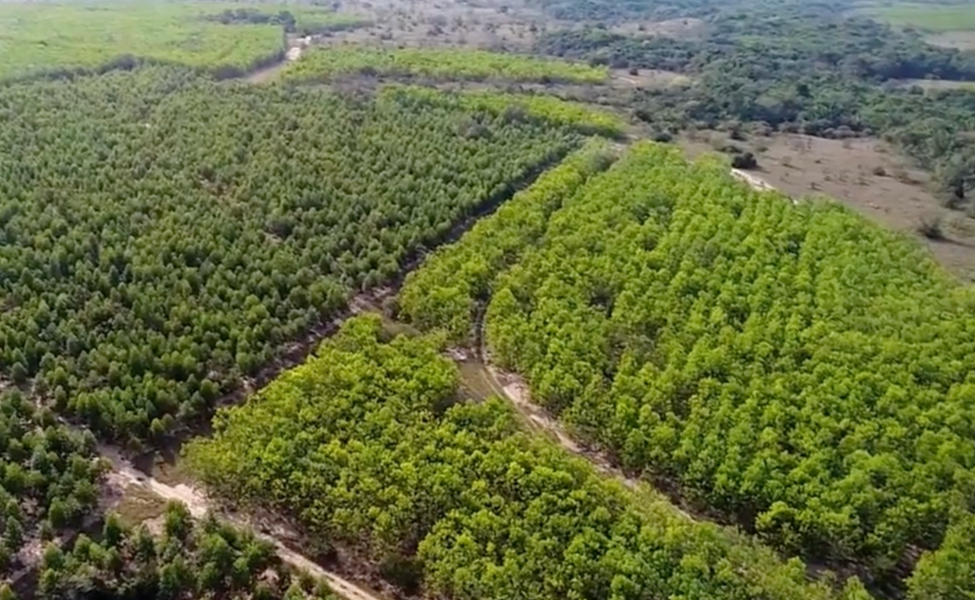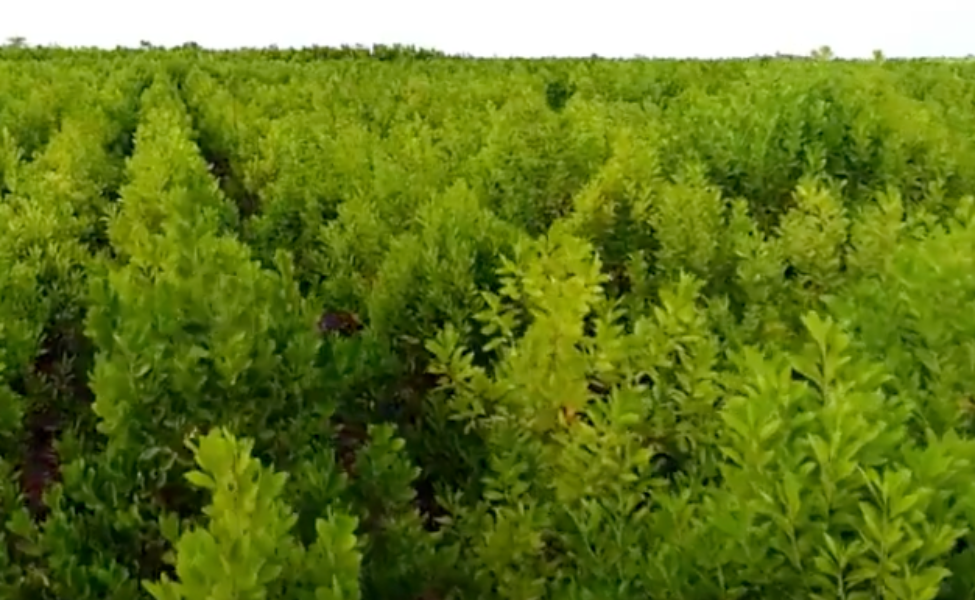Diversifying your investment portfolio is crucial in today’s dynamic market, and one compelling way to do this is through carbon offsets. Carbon offsets allow investors to support projects reducing greenhouse gas emissions, providing financial returns and environmental benefits.
Carbon offsets can help combat climate change while securing sustainable and profitable returns. This guide will explore how carbon offsets work, their benefits, and why the Colombian Carbon Credit project, managed by experts like Gutierrez Group, presents an excellent investment opportunity.
What are carbon offsets?
A carbon offset is a tradable certificate or credit representing reducing, removing, or avoiding one metric ton of carbon dioxide or its equivalent in other greenhouse gases (GHGs). These offsets are generated through various projects that either reduce emissions at their source or capture and store carbon dioxide from the atmosphere. Such projects include reforestation, renewable energy installations, efficiency improvements, and methane capture from landfills or agricultural practices.
The primary purpose of carbon offsets is to mitigate carbon emissions by balancing out emissions produced elsewhere. For instance, a company emitting carbon dioxide through its operations can purchase carbon offsets from a reforestation project that absorbs an equivalent amount of CO2 from the atmosphere.
This mechanism allows organizations, individuals, and governments to compensate for their carbon footprint and contribute to global efforts to reduce greenhouse gas concentrations.
Importance of carbon offsets in today’s economy
Carbon offsets are critical in addressing climate change and promoting sustainable practices in today’s economy. As global awareness of environmental issues grows, carbon offsets have become valuable for achieving net-zero emissions targets. Here’s why carbon offsets are increasingly important:
1. Compliance with Regulations: Many countries and regions have implemented stringent regulations to limit carbon emissions. Carbon offsets provide a flexible mechanism for companies to meet these regulatory requirements while continuing their operations. This flexibility is precious for industries where reducing emissions directly may be technically challenging or economically unfeasible.
2. Corporate Social Responsibility (CSR): Companies increasingly recognize the importance of sustainability in their business strategies. Investing in carbon offsets allows businesses to demonstrate their commitment to environmental stewardship and social responsibility. This commitment can enhance brand reputation, attract eco-conscious consumers, and improve stakeholder relations.
3. Market Opportunities: The voluntary carbon market is increasing, offering new investment opportunities. As demand for carbon offsets rises, so does their value, providing financial returns for investors in carbon offset projects. This growth is driven by regulatory pressures and voluntary commitments from companies aiming to achieve carbon neutrality.
4. Technological Innovation: Carbon offset projects often involve cutting-edge technologies and innovative practices. By investing in these projects, stakeholders support developing and deploying new carbon reduction and removal solutions, fostering a more sustainable and resilient economy.
5. Global Climate Goals: Achieving international climate goals, such as those set by the Paris Agreement, requires collective action from all sectors of society. Carbon offsets are a crucial component of global strategies to limit global warming to well below 2°C, as they enable widespread participation in climate mitigation efforts.

How carbon offsets work
Mechanism of carbon offsets
Generating carbon offsets begins with developing projects specifically designed to reduce or capture carbon dioxide (CO2) and other greenhouse gases. These projects can vary widely in nature but typically fall into a few main categories:
1. Renewable Energy Projects: These projects focus on generating energy from renewable sources like wind, solar, and hydroelectric power. By displacing the need for fossil fuel-based energy, they help reduce overall carbon emissions.
2. Forestry and Land Use Projects: include afforestation, reforestation, and forest conservation efforts. Trees naturally absorb CO2 from the atmosphere, so planting new forests or protecting existing ones can significantly offset emissions.
3. Energy Efficiency Projects: Initiatives to improve energy efficiency in buildings, factories, and transportation can substantially reduce carbon emissions. This includes upgrading lighting, heating, and cooling systems and optimizing industrial processes.
4. Methane Capture Projects: Methane is a potent greenhouse gas, and capturing it from landfills, agricultural operations, and wastewater treatment plants can reduce overall emissions. Methane can be converted into energy, further contributing to emission reductions.
5. Carbon Capture and Storage (CCS): These advanced projects involve capturing CO2 emissions from industrial sources and storing them underground to prevent their release into the atmosphere.
Once these projects are implemented, independent third parties measure and verify their impact on reducing or capturing carbon emissions. This verification process ensures that the claimed emission reductions are real, additional (i.e., they wouldn’t have occurred without the project), and permanent.
Trading Carbon Offsets
After verification, carbon offsets are issued as tradable certificates or credits, each representing the reduction or removal of one metric ton of CO2 or its equivalent. These credits can then be bought and sold on various carbon markets. There are two main types of carbon markets:
1. Compliance Markets: These markets are established by regulatory frameworks requiring specific industries to limit carbon emissions. Companies that exceed their emission caps can purchase carbon offsets to comply with regulations.
2. Voluntary Markets: These markets are driven by companies and individuals who voluntarily offset their emissions. Buyers in the voluntary market typically include corporations aiming to meet sustainability goals, non-profits, and environmentally conscious individuals. The voluntary market is more flexible and diverse, accommodating various projects and buyers.
The trading of carbon offsets involves several steps:
1. Purchase: Buyers purchase carbon offsets from project developers or intermediaries, whether for compliance or voluntary purposes. This transaction can occur through direct contracts, carbon exchanges, or brokers.
2. Retirement: Once purchased, carbon offsets are often retired to ensure they are not resold or double-counted. Retirement means the offset has been used to compensate for emissions and can no longer be traded.
3. Certification and Tracking: Reliable certification and tracking systems, such as the Verified Carbon Standard (VCS) and the Gold Standard, provide transparency and credibility to the carbon offset market. These systems ensure that offsets meet rigorous standards and that their environmental benefits are accurately recorded.

Benefits of investing in carbon offsets
Investing in carbon offsets can yield significant financial returns, making it an attractive option for diversifying your investment portfolio. As the demand for carbon offsets increases due to regulatory requirements and corporate sustainability goals, the value of these offsets is likely to rise. Here’s a closer look at the financial benefits:
Growing Market Demand: As more companies and governments commit to carbon neutrality, the demand for carbon offsets is surging. This increased demand can drive up the price of carbon credits, providing lucrative returns for early investors.
– Regulatory Compliance: Businesses operating in regions with stringent carbon emission regulations often need to purchase carbon offsets to comply with legal requirements. This necessity creates a steady market for carbon offsets, ensuring continuous demand and potential price appreciation.
– Long-term Investment Stability: Carbon offset projects, especially those related to forestry and renewable energy, typically offer stable and predictable returns over long periods. Projects like afforestation or reforestation can generate carbon credits for many years as trees grow and sequester carbon.
– Portfolio Diversification: Carbon offsets add a unique asset class to an investment portfolio, reducing overall risk through diversification. Unlike traditional stocks and bonds, carbon offsets are directly linked to environmental outcomes, hedging against market volatility and economic downturns.
A prime example of a profitable and sustainable investment is the Colombian Carbon Credits project. This initiative involves reforestation efforts that generate carbon credits. Investors gain financial returns and contribute to global climate mitigation efforts by investing in such projects.
Gutierrez Group’s Colombian Carbon Credits
Gutierrez Group’s Colombian Carbon Credits is an innovative investment initiative that generates carbon offsets through sustainable forestry projects. This project, previously known as Colombian Timber, involves reforestation efforts that help mitigate climate change by sequestering CO2 and offer attractive financial returns for investors.
Located in Colombia’s lush and fertile regions, these projects utilize degraded and underutilized lands to plant fast-growing, high-value tree species like Acacia Mangium and Eucalyptus Pellita. These species are chosen for their rapid growth and high carbon absorption rates, making them ideal for carbon offset generation.
The project’s projections are highly promising, offering an internal rate of return (IRR) of over 20% annually. The investment cycle typically spans 7-8 years, during which the planted trees mature and are harvested for biomass, which is then converted into energy. This biomass energy production further supports sustainable practices by providing a renewable energy source.
Investors can expect consistent and stable returns from the sale of carbon credits generated by these reforestation activities. Additionally, the timber harvested from these trees provides an additional revenue stream, enhancing the overall profitability of the investment.
Partnering with experts
When it comes to investing in carbon offsets, partnering with experienced professionals like Gutierrez Group offers several advantages:
– Expert Guidance: Gutierrez Group provides comprehensive investment and legal advice, ensuring that all aspects of your investment are handled with expertise. Their deep understanding of Colombian regulations and the carbon offset market helps mitigate risks and maximize returns.
Project Management: With over 15 years of experience, Gutierrez Group has a proven track record in managing large-scale reforestation and carbon offset projects. Their expertise ensures that the projects are implemented efficiently and meet all necessary standards for carbon credit certification.
– Transparent Reporting: Investors receive regular updates and detailed reports on the progress and performance of their investments. This transparency builds trust and allows investors to make informed decisions based on accurate and up-to-date information.
Sustainable Impact: Gutierrez Group’s commitment to sustainability ensures that all projects generate financial returns and deliver significant environmental and social benefits. Investors contribute to meaningful climate action and community development by partnering with us.
Network and Resources: Gutierrez Group’s extensive network of industry professionals, government contacts, and local stakeholders provides invaluable support in navigating the complexities of investing in carbon offsets. This network helps streamline processes and opens up new investment opportunities.

Conclusion
Investing in carbon offsets through projects like Gutierrez Group’s Colombian Carbon Credits offers a unique opportunity to diversify your investment portfolio while positively impacting the environment.
You can be confident in your investment decisions with promising financial returns, significant environmental benefits, and expert guidance from the Gutierrez Group. By supporting sustainable forestry and carbon sequestration projects, you contribute to global climate mitigation efforts and foster sustainable development in Colombia. Learn more about what we do here.



I was looking at some of your content on this website and I think this internet site is real informative! Keep on putting up.